Why Chatbots Are Key to Customer Support Success

Chatbots are transforming customer support by solving problems faster and improving interactions. Their usage has doubled since 2020, and the chatbot market is projected to grow from $2.47 billion in 2021 to $15.57 billion in 2025. High-performing organizations are more likely to use AI chatbots, which save time and reduce effort. About 64% of consumers trust brands more when AI agents feel human-like. By 2025, businesses that adopt customer service chatbot use cases will meet customer demands better. Sobot’s solutions already help companies achieve these goals effectively.
The Current Challenges in Customer Service
Rising Customer Expectations for Instant and Personalized Support
You’ve probably noticed how much customers value quick and tailored responses. Today, 93% of customer service teams agree that expectations are higher than ever. Customers want their problems solved fast, and they expect businesses to know their preferences. If you fail to meet these demands, frustration builds. In fact, 76% of customers feel annoyed when service isn’t personalized, and 86% are willing to pay more for a great experience.
| Statistic | Description |
|---|---|
| 1 | Customers are 2.4 times more likely to stay if problems are solved quickly. |
| 2 | 64% of customers prefer businesses that resolve issues where they are. |
| 3 | 77% of consumers choose brands that provide personalized experiences. |
| 4 | 76% get frustrated without personalized service. |
| 5 | 86% are willing to pay more for a great experience. |
| 6 | 80% are more likely to buy with personalized choices. |
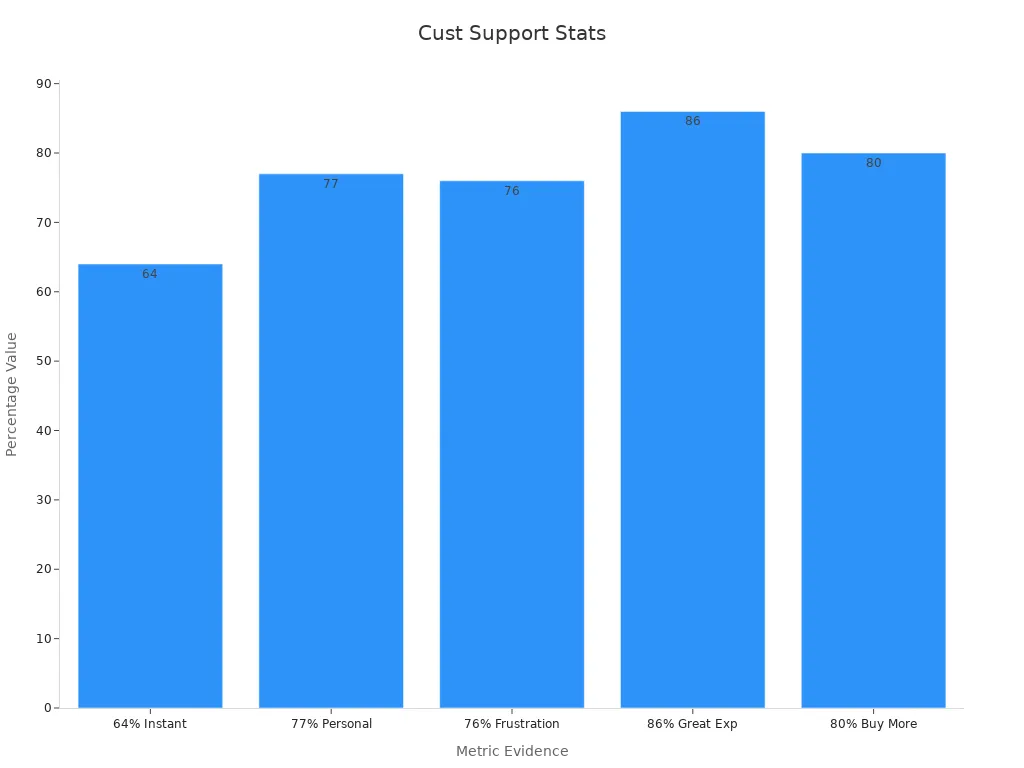
These numbers highlight why instant and personalized customer service is no longer optional. It’s a necessity for delivering a superior customer experience.
High Costs and Inefficiencies in Traditional Support Models
Traditional customer service models often rely heavily on human agents. This approach can be expensive and inefficient. Repetitive tasks, like answering the same questions, waste valuable time. Meanwhile, 80% of people report negative experiences with customer service, often due to long wait times or unresolved issues. These inefficiencies not only increase costs but also harm your brand’s reputation.
By automating repetitive tasks, you can reduce costs and free up agents to handle complex inquiries. This shift improves both efficiency and the overall customer experience.
Managing Peak-Time Inquiries and Scaling Operations
Handling customer inquiries during peak times, such as Black Friday, can overwhelm your team. Increased wait times lead to dissatisfaction and even customer abandonment. Agent burnout becomes a real issue, causing higher turnover rates. Worse, inconsistent service quality during these periods can damage your brand’s reputation.
Scaling operations to meet demand is one of the biggest challenges in customer support. Without the right tools, maintaining high-quality service during busy times feels impossible.
Tip: Automating parts of your customer service process can help you scale effectively while maintaining consistency.
Inconsistent Service Quality Across Multiple Channels
Delivering consistent service across multiple channels is a challenge many businesses face. Customers expect the same level of support whether they contact you via email, live chat, social media, or phone. When the quality of service varies between these channels, it creates frustration and erodes trust in your brand.
Inconsistent service often stems from poor integration between communication platforms. For example, if a customer starts a conversation on live chat and later switches to email, they may need to repeat their issue. This lack of continuity wastes time and leaves customers feeling undervalued. A seamless experience across channels is essential for building loyalty and ensuring customer satisfaction.
Here are some common reasons why service quality may vary across channels:
- Different teams manage separate channels without proper coordination.
- Outdated systems fail to share customer data between platforms.
- Limited training leaves agents unprepared to handle inquiries consistently.
Note: Customers are more likely to stay loyal when they receive a smooth, unified experience across all touchpoints.
To address this issue, you need tools that unify your communication channels. Solutions like Sobot’s AI Chatbot integrate with multiple platforms, ensuring consistent responses and reducing the need for customers to repeat themselves. By centralizing customer data, you can provide agents with the context they need to deliver high-quality support every time.
Improving multi-channel service quality isn’t just about technology. It also requires a commitment to training your team and optimizing workflows. When you prioritize consistency, you create a better experience for your customers and strengthen your brand reputation.
How Chatbots Solve Customer Service Challenges
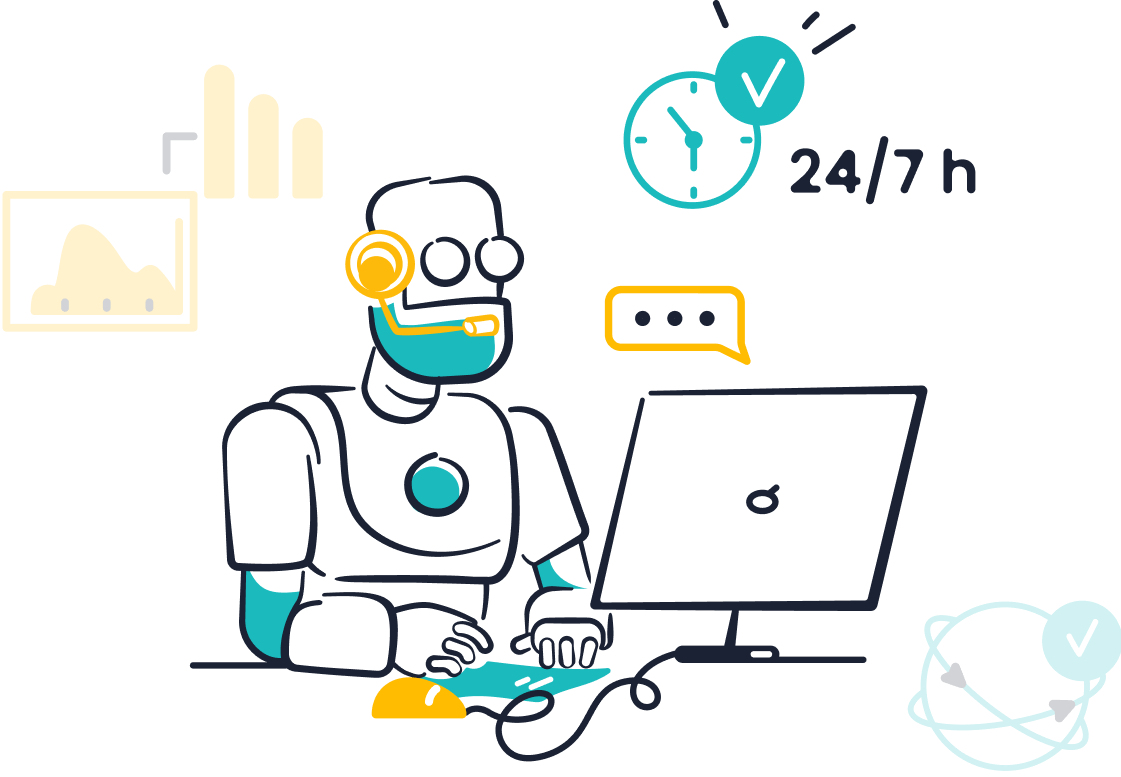
Automating Repetitive Tasks to Reduce Agent Workload
Repetitive tasks like answering FAQs or processing simple requests can overwhelm your customer service team. These tasks consume valuable time that agents could spend solving complex issues. AI chatbots excel at automating these repetitive interactions, allowing your team to focus on higher-value tasks. For example, chatbots can instantly provide answers to common questions about store hours, return policies, or product availability.
- AI chatbots reduce average handling times by efficiently managing routine queries.
- They improve customer satisfaction by offering quick, accurate responses.
- Their 24/7 availability eases the pressure on your team, especially during peak times.
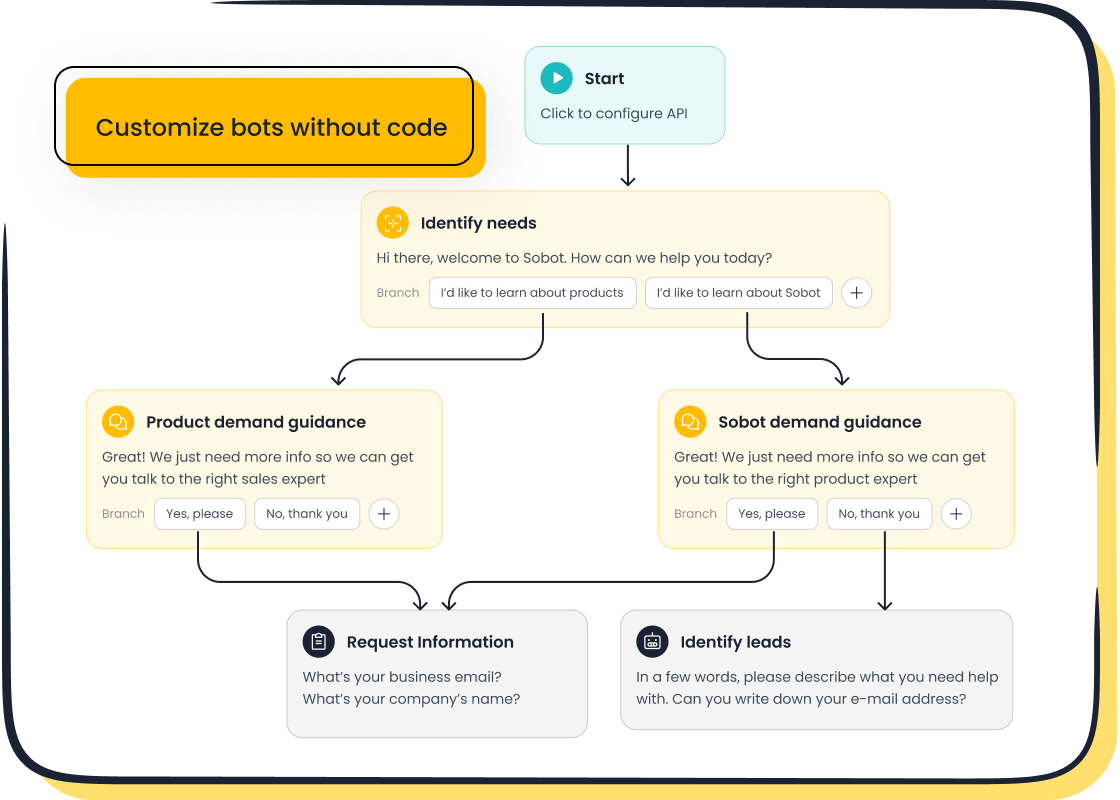
Sobot’s AI-powered agent assistance takes this a step further. It not only automates repetitive tasks but also supports agents by providing real-time suggestions and summaries. This dual approach enhances productivity and ensures your team delivers exceptional service. By adopting automated customer service solutions like Sobot’s chatbot, you can reduce operational costs and improve efficiency.
Providing 24/7 Availability for Global Customer Support
Your customers expect support whenever they need it, regardless of time zones. AI chatbots make this possible by providing round-the-clock assistance. Whether it’s midnight in New York or noon in Tokyo, chatbots ensure your business remains accessible. This constant availability improves customer satisfaction and builds trust.
| Metric Type | Key Metrics |
|---|---|
| Customer Experience Metrics | Average response time (target: under 30 seconds) |
| First contact resolution rate (target: 70%+) | |
| Customer satisfaction scores (target: 4.5/5 or higher) | |
| Engagement Metrics | Chatbot usage rates and conversation volume |
| Customer return rate for chatbot interactions | |
| Operational Efficiency | Cost per customer interaction reduction |
| Support staff productivity improvement | |
| Business Impact Metrics | Lead generation and qualification rates |
| Customer retention improvement |
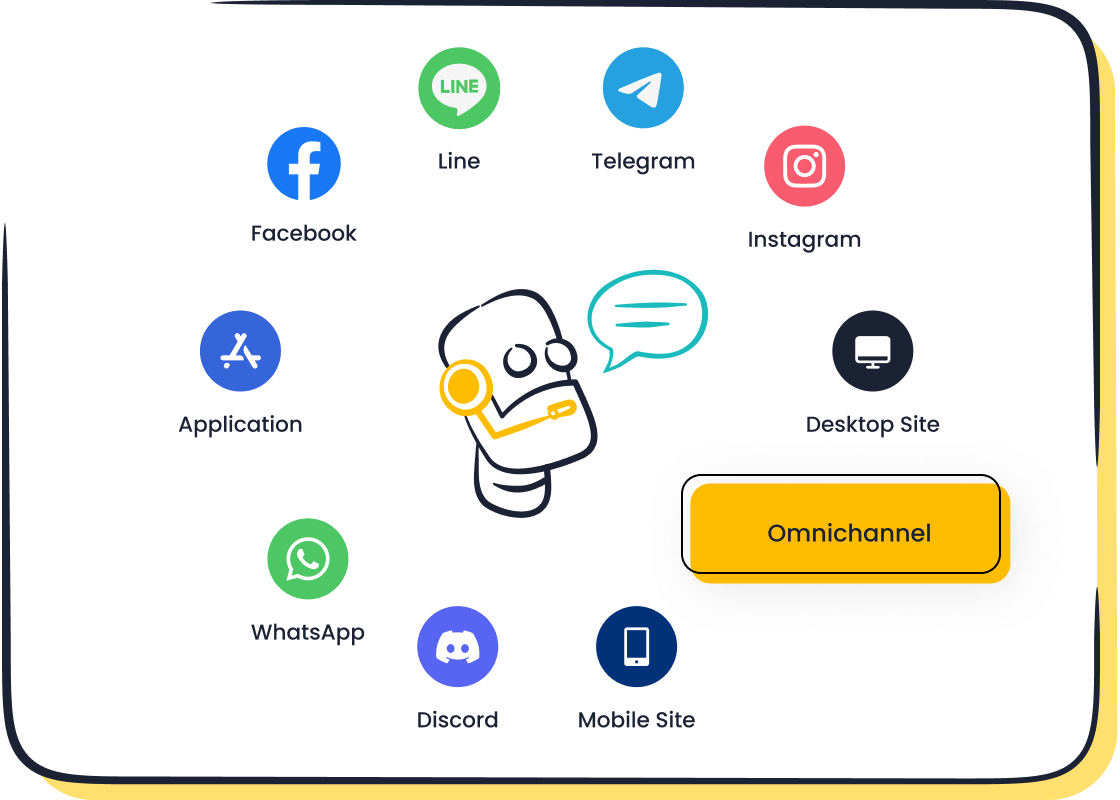
Sobot’s AI chatbot uses advanced technology to handle up to 90% of inquiries without human intervention. It can answer 100 questions in the time it takes a human agent to answer one. This efficiency not only reduces costs but also ensures your customers receive immediate support. With Sobot, you can deliver global customer service that meets the demands of today’s fast-paced world.
Ensuring Consistent and Accurate Responses Across Channels
Consistency is key to building trust in your brand. Customers expect the same level of service whether they contact you via email, live chat, or social media. AI chatbots excel at maintaining this consistency. They integrate with your existing tools, like CRM systems, to access real-time customer information. This ensures accurate and uniform responses across all channels.
For instance, L'Oréal’s AI chatbot communicates in multiple languages, providing a consistent experience for customers worldwide. Similarly, H&M’s chatbot offers uniform support across online and in-store channels. These examples highlight how AI applications can eliminate errors caused by human fatigue or lack of knowledge.
Sobot’s smart chatbots take this further by offering multilingual support and omnichannel integration. They ensure your customers receive seamless, user-centric conversations no matter where they interact with your brand. By leveraging AI chatbot uses, you can enhance customer satisfaction and drive innovation in your customer service strategy.
Enhancing Customer Satisfaction Through Faster Resolutions
Faster resolutions directly impact how satisfied your customers feel. When issues are resolved quickly, customers leave interactions feeling valued and respected. This is where AI chatbots shine. They provide instant responses, eliminating the frustration of long wait times. By addressing queries in seconds, chatbots ensure your customers don’t have to wait in line for assistance.
AI-driven customer support has been shown to boost customer satisfaction by 33%. Companies using chatbots report up to a 40% reduction in average response times. These improvements lead to happier customers and higher satisfaction scores. For example, a customer asking about a product’s availability can receive an immediate answer through a chatbot, rather than waiting for a human agent to respond.
Chatbots also reduce the chances of errors. Unlike human agents, who may overlook details during busy periods, chatbots consistently deliver accurate information. This reliability builds trust and encourages repeat business. Customers appreciate knowing they can rely on your service to solve their problems efficiently.
Sobot’s AI Chatbot takes this a step further. It operates 24/7, handling up to 90% of inquiries without human intervention. Whether it’s a simple question about store hours or a more complex issue like troubleshooting a product, Sobot’s chatbot ensures faster resolutions. This not only saves time for your team but also enhances customer experiences by providing seamless, real-time support.
When you prioritize speed and accuracy in customer service, you create a positive impression that lasts. Customers are more likely to recommend your brand and return for future purchases. By integrating AI chatbots into your support strategy, you can meet modern expectations and build lasting customer loyalty.
Key Benefits of Chatbots in Customer Service
Cost Efficiency and Operational Savings
Chatbots offer a cost-effective way to manage customer service operations. By automating responses to common inquiries, you can significantly reduce the need for human agents. This not only saves money but also allows your team to focus on more complex tasks that require a personal touch.
- Chatbots can save businesses 20–30% in customer support costs by handling repetitive queries.
- On average, companies save $300,000 annually through chatbot implementation.
- Automating routine tasks with chatbots reduces support costs by 30%, enabling fewer agents to manage the same workload.
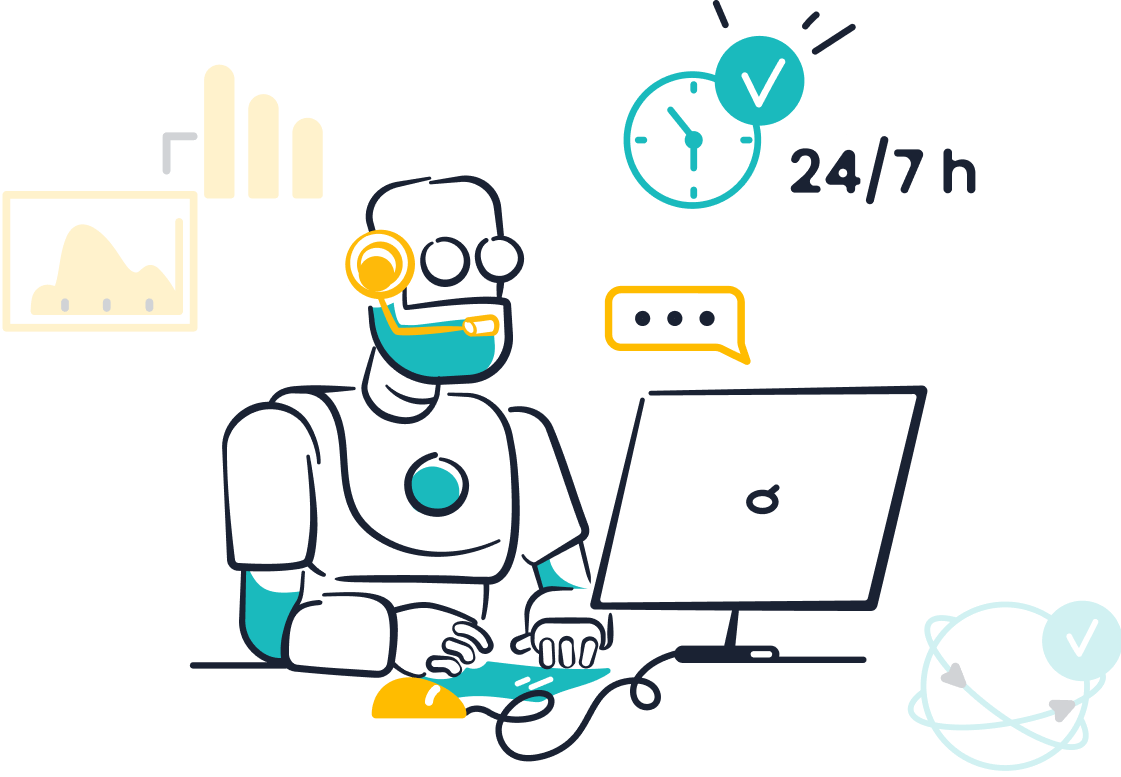
Sobot’s AI chatbot enhances efficiency by autonomously solving regular queries, improving productivity by 70%. It operates 24/7, triaging inquiries without additional staffing costs. This approach can save up to 50% on agent expenses while maintaining high-quality service. By adopting self-service options like Sobot’s chatbot, you can achieve substantial operational savings and improve your bottom line.
Scalability to Handle High Volumes of Customer Interactions
Scaling customer service during peak times can be challenging. AI-powered chatbots excel at managing high volumes of inquiries without compromising quality. They provide instant responses, ensuring your customers receive timely support even during busy periods.
- Chatbots handle thousands of inquiries simultaneously, operating 24/7 without breaks.
- They resolve over 60% of common FAQs automatically, freeing agents to address complex issues.
- Businesses using conversational AI report a 20% increase in customer satisfaction scores.
- AI-driven chat solutions reduce operational costs while maintaining service quality during peak times.
For example, during Black Friday sales, chatbots can manage the surge in customer inquiries efficiently. Sobot’s AI chatbot integrates seamlessly across channels, ensuring consistent and accurate responses. It automates routine tasks, allowing your team to scale operations effortlessly. By leveraging self-service options, you can handle peak-time inquiries without overwhelming your staff.
Personalization Through AI and Machine Learning
AI and machine learning enable chatbots to deliver personalized support that meets individual customer needs. By analyzing customer data, chatbots can provide tailored recommendations and solutions, enhancing the overall experience.
| Metric | Description |
|---|---|
| Customer Satisfaction (CSAT) | Measures the impact of personalization on overall customer satisfaction. |
| First Contact Resolution (FCR) | Tracks the percentage of queries resolved in the first interaction, reflecting personalized support effectiveness. |
| Average Handle Time (AHT) | Evaluates how personalization improves efficiency by measuring the time taken to resolve issues. |
| Net Promoter Score (NPS) | Indicates the likelihood of customers recommending your brand based on their personalized experiences. |
Sobot’s AI chatbot uses advanced machine learning to understand customer intent and preferences. It offers smart self-service options, proactive messaging, and real-time assistance, boosting conversions by 20%. Its multilingual capabilities ensure personalized support for a global audience. By integrating AI-driven chatbots, you can enhance customer satisfaction and build lasting loyalty.
Multilingual Support for a Global Customer Base
Your customers come from diverse backgrounds, and many prefer interacting in their native language. Multilingual support is no longer a luxury; it’s a necessity for businesses aiming to thrive globally. Chatbots equipped with multilingual capabilities allow you to connect with customers in their preferred language, improving satisfaction and reducing churn.
- 29% of businesses lose customers due to the absence of multilingual support.
- 70% of users feel more loyal to brands offering native language assistance.
- 35% of users switch products for better language support.
Note: Multilingual chatbots give your business a competitive edge in global markets. They attract a broader audience and distinguish you from competitors who overlook language diversity.

Sobot’s AI chatbot excels in this area. It supports multiple languages, ensuring seamless communication across borders. Whether your customers speak English, Spanish, or Mandarin, Sobot’s chatbot adapts to their needs. This feature enhances customer satisfaction and builds loyalty.
By 2026, 80% of competitive customer experiences will require real-time, AI-enabled multilingual interaction. Businesses that invest in multilingual chatbots today will be better positioned to meet these demands. Sobot’s chatbot ensures your brand stays ahead by delivering personalized, multilingual support that resonates with a global audience.
Data-Driven Insights for Continuous Improvement
Improving customer service requires understanding how your chatbot performs. Data-driven insights help you track key metrics and optimize functionality. These insights allow you to identify gaps, enhance user experience, and make informed decisions.
| Metric | Description |
|---|---|
| User Engagement | Measures how users interact with the chatbot. |
| Response Times | Tracks the speed at which the chatbot responds. |
| Conversion Rates | Indicates the effectiveness of the chatbot in driving actions. |
| User Satisfaction | Assesses how satisfied users are with their interactions. |
Chatbot analytics provide real-time data that reveals how well your chatbot serves customers. You can monitor response times, track engagement, and measure satisfaction levels. These metrics guide you in refining conversational flows and improving resolution rates.
Sobot’s AI chatbot offers advanced reporting tools that simplify this process. It generates actionable insights, helping you optimize workflows and enhance customer experiences. For example, if response times increase during peak hours, Sobot’s analytics can pinpoint the issue and suggest adjustments.
Tip: Use data-driven insights to continuously improve your chatbot’s performance. This approach ensures your chatbot evolves alongside customer expectations.
By leveraging Sobot’s analytics, you can create a smarter, more efficient chatbot. This not only boosts satisfaction but also drives conversions and strengthens customer loyalty.
Customer Service Chatbot Use Cases in 2025
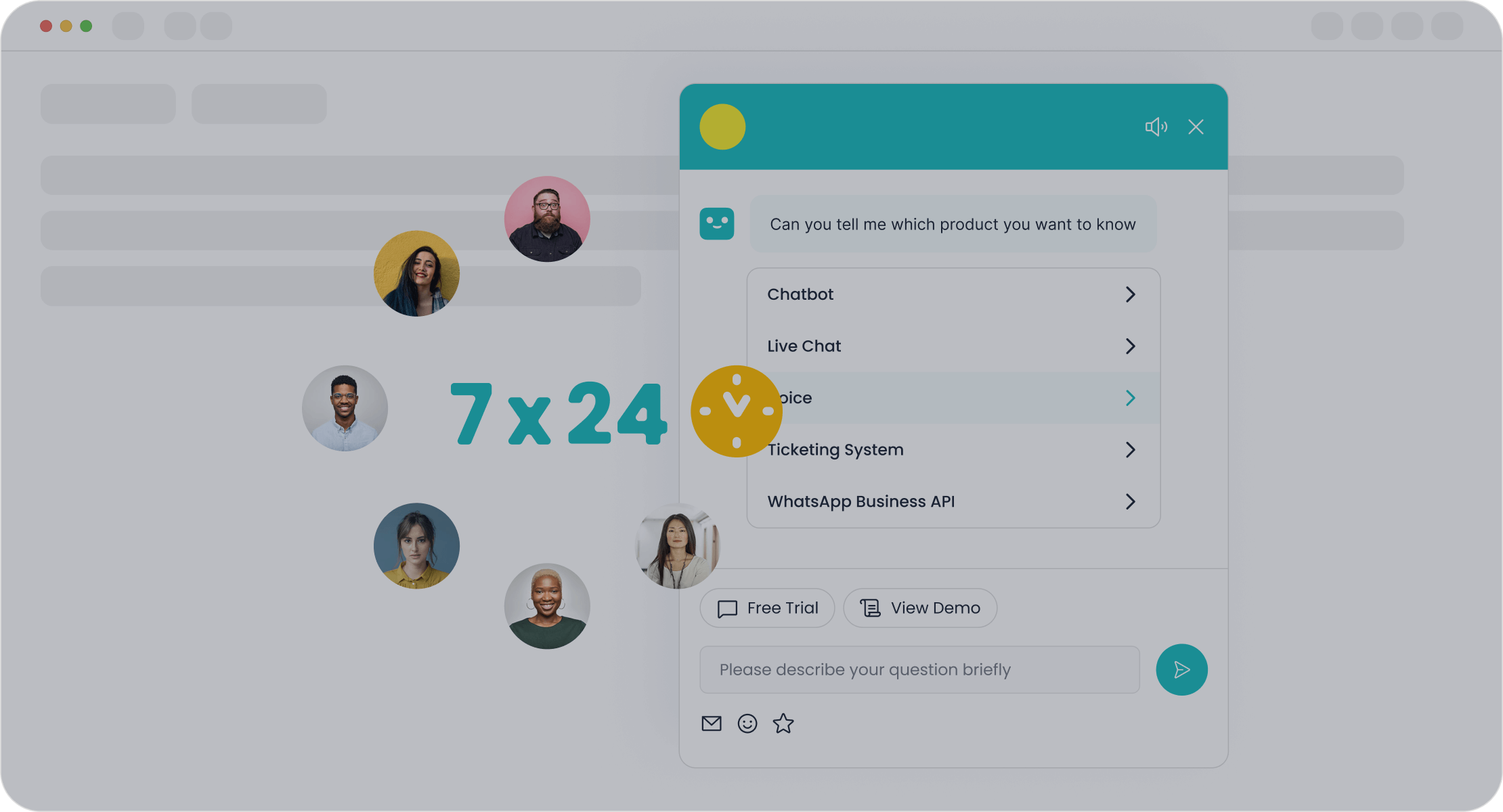
Proactive Support with Predictive Analytics
Proactive support is one of the most popular chatbot use cases shaping the future of customer service. By leveraging predictive analytics, chatbots can anticipate customer needs and address issues before they arise. For example, they can notify you about potential delays, service disruptions, or even suspicious activities in your account. This approach not only enhances customer satisfaction but also builds trust in your brand.
| Company | Description |
|---|---|
| Amazon | Uses predictive analytics to anticipate shipping delays and proactively notifies customers. |
| Verizon | Analyzes network traffic to detect service disruptions before customers notice. |
| Netflix | Predicts user content preferences and adjusts video quality during buffering without user input. |
| Banking | Implements AI to alert customers of suspicious transactions in real-time. |
| Slack | Utilizes Slackbot to engage and assist new users during onboarding. |
| Apple | Invites users to share creativity through campaigns, engaging them proactively. |
Chatbots equipped with real-time sentiment analysis can also detect customer frustration and offer solutions instantly. This proactive approach ensures a seamless experience, reducing the chances of dissatisfaction.
Real-Time Order Tracking and Updates
Real-time order tracking is another of the most popular chatbot use cases. Customers value transparency, and chatbots excel at providing timely updates on their orders. You can check the status of your shipment anytime without contacting support. This self-service option saves time and reduces the workload on your customer service team.
| Benefit | Description |
|---|---|
| Real-time updates | Chatbots provide customers with timely alerts on shipment status. |
| Self-service tracking | Customers can check order status anytime without needing to contact support. |
| Reduced support queries | Automated updates decrease the volume of inquiries to customer service. |
Chatbots ensure you stay informed at every stage of the delivery process. They send real-time notifications about shipping, delays, or delivery confirmations. This convenience improves customer satisfaction and allows your team to focus on more complex tasks.
- Chatbots offer a convenient way for customers to monitor their purchases 24/7.
- They provide real-time order status and delivery updates, ensuring customers are informed at every stage.
- By allowing self-service tracking, chatbots minimize the need for customer support interactions.
AI-Driven Upselling and Cross-Selling Opportunities
AI-powered chatbots are transforming how businesses approach upselling and cross-selling. By analyzing customer behavior and preferences, chatbots can recommend products or services that align with individual needs. For instance, if you purchase a smartphone, the chatbot might suggest accessories like cases or headphones.
This personalized approach increases the likelihood of conversions. Chatbots use real-time data to identify opportunities and present them in a non-intrusive manner. They can also offer discounts or bundle deals, making the suggestions more appealing. This strategy not only boosts sales but also enhances the customer experience by providing relevant recommendations.
AI-driven upselling and cross-selling are essential for businesses aiming to maximize revenue while maintaining customer satisfaction. By integrating these capabilities into your chatbot, you can create a more engaging and profitable customer journey.
Seamless Handoffs Between Chatbots and Human Agents
Chatbots handle many customer inquiries, but some situations require human expertise. Seamless handoffs between chatbots and human agents ensure customers receive the best support possible. When a chatbot identifies a complex issue, it transfers the conversation to an agent without losing context. This smooth transition improves efficiency and enhances the customer experience.
Metrics validate the effectiveness of these handoffs. For example:
| Metric | Description |
|---|---|
| First Contact Resolution | Measures if a customer's issue is resolved in the first interaction. High rates indicate efficiency. |
| Average Handle Time | Indicates the average duration agents spend on each interaction, balancing speed and quality. |
| Customer Satisfaction Score | Direct feedback from customers on their experience, typically gathered through post-interaction surveys. |
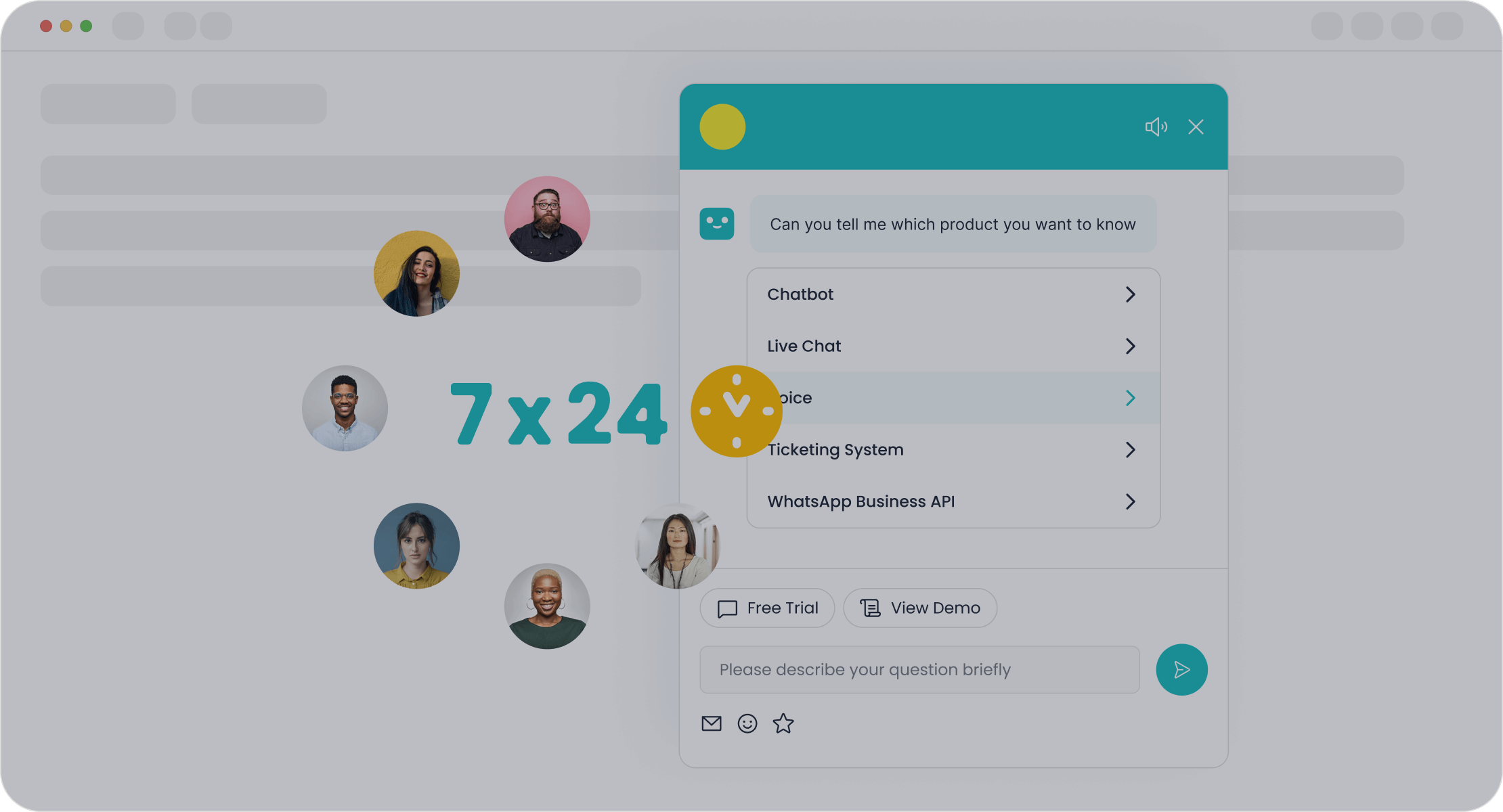
These metrics highlight how seamless handoffs reduce frustration and build trust. Sobot’s AI chatbot excels in this area by integrating with CRM systems. It provides agents with all the necessary context, ensuring they can resolve issues quickly and effectively. This approach not only saves time but also boosts customer satisfaction.
Tip: Train your team to collaborate with chatbots. This ensures smooth transitions and consistent service quality.
Voice-Enabled Chatbots for Omnichannel Experiences
Voice-enabled chatbots are revolutionizing customer service. They allow customers to interact using natural speech, creating a more intuitive experience. These chatbots integrate across channels, ensuring consistent support whether customers use phone calls, apps, or smart devices.
The benefits of voice-enabled chatbots are significant. For instance:

Voice chatbots automate 100% of inbound and outbound calls, reducing manpower needs by 90%. They also cut operational costs by 60% and improve customer satisfaction scores by 27%. These advantages make them essential for businesses aiming to deliver exceptional omnichannel experiences.
Sobot’s voice-enabled chatbots take this further by offering real-time speech recognition and multilingual support. They ensure accurate responses, even during high call volumes. By adopting this technology, you can enhance accessibility, reduce errors, and improve overall efficiency.
Note: Voice-enabled chatbots are not just tools; they are partners in creating seamless, customer-centric experiences.
Implementing Chatbots Effectively with Sobot
Choosing the Right Chatbot Platform for Your Business
Selecting the right chatbot platform is crucial for achieving your customer service goals. You need a solution that aligns with your business objectives and integrates seamlessly with your existing systems. A well-chosen platform enhances user experience, ensures security, and supports continuous improvement.
Here are some key factors to consider:
- Align the chatbot’s capabilities with your organizational goals.
- Evaluate compatibility with your current technology stack.
- Ensure the platform prioritizes data protection and compliance.
- Look for user-centric designs that simplify customer interactions.
- Assess vendor reputation, experience, and support quality.
- Use performance metrics and analytics to track and optimize results.
Sobot’s AI Chatbot checks all these boxes. It offers a no-coding-required setup, multilingual support, and seamless integration with CRM tools. These features make it an ideal choice for businesses aiming to enhance efficiency and customer satisfaction.
Designing Conversational Flows for User-Friendly Interactions
Creating effective conversational flows ensures your chatbot delivers a smooth and intuitive experience. Start by understanding your customers’ needs and expectations. Conduct user research to identify common queries and pain points.
Follow these principles to design user-friendly interactions:
- Use clear and straightforward language to avoid confusion.
- Incorporate personalization by tailoring responses to user contexts.
- Leverage flexible conversation management to adapt to user inputs.
- Provide feedback and options to guide users effectively.
For example, Sobot’s AI Chatbot uses advanced machine learning to understand customer intent. It adapts responses based on real-time data, ensuring clarity and relevance. This approach not only improves user satisfaction but also boosts engagement.
Integrating Sobot Chatbot with Existing CRM and Support Tools
Integrating your chatbot with CRM and support tools streamlines operations and enhances service quality. Sobot’s AI Chatbot excels in this area, offering seamless integration across multiple platforms.
| Type | Description |
|---|---|
| Challenge | Businesses need 24/7 availability to meet customer expectations. |
| Challenge | Retail brands require unified solutions for sales, marketing, and support. |
| Benefit | Automation reduces response times and improves service grading. |
| Benefit | Sobot enables cross-channel management, ensuring quick issue resolution. |
By integrating Sobot Chatbot, you can unify customer data, automate repetitive tasks, and improve collaboration among teams. This integration ensures your customers receive consistent, high-quality support across all channels.
Monitoring Performance Metrics and Optimizing Over Time
To ensure your chatbot delivers consistent value, you need to monitor its performance regularly. Tracking key metrics helps you identify areas for improvement and optimize its functionality over time. Here are some essential metrics to focus on:
- Response Time: Measure how quickly your chatbot replies to user queries.
- User Retention Rate: Track the percentage of users who return after their first interaction.
- Completion Rate: Evaluate how often users complete desired actions, such as making a purchase or resolving an issue.
- Customer Satisfaction Score (CSAT): Assess how satisfied users are with their chatbot experience.
- Engagement Rate: Monitor the number of interactions per user to gauge interest and usability.
| Category | Key Metrics |
|---|---|
| Customer Care | Escalation rate, Email reduction rate, Duration of chatbot-generated calls |
| Marketing | Conversion rate, Basket abandonment rate, Average session duration |
| User Experience | Self-service rate, Bounce rate, Goal completion rate, Average chat time |
Using tools like Sobot’s chatbot analytics dashboard, you can track these metrics in real time. This dashboard provides actionable insights, helping you refine conversational flows and improve resolution rates. For example, if your chatbot’s response time increases during peak hours, you can adjust workflows to maintain efficiency.
Optimization doesn’t stop at monitoring. Regular A/B testing allows you to experiment with different scripts and workflows to find what works best. Integrating your chatbot with CRM systems also provides a comprehensive view of user interactions, enabling you to deliver more personalized support. By continuously analyzing and optimizing, you ensure your chatbot evolves to meet changing customer expectations.
Tip: Establish a routine for reviewing performance metrics. This proactive approach keeps your chatbot aligned with your business goals.
Training Teams to Collaborate with Chatbot Technology
Your chatbot performs best when your team knows how to work alongside it. Training your staff to collaborate with chatbot technology ensures seamless interactions and enhances customer satisfaction. Start by educating team members on chatbot best practices. This includes understanding how the chatbot operates and knowing when to step in for complex issues.
| Evidence | Description |
|---|---|
| Educating Team Members | Training ensures accurate responses and effective user interactions. |
| Collaborative Effort | Combining chatbot efficiency with human expertise strengthens support systems. |
| Enhancing Customer Satisfaction | Human oversight balances quick responses with detailed assistance. |
Encourage a collaborative design process where your team contributes to shaping chatbot workflows. Stakeholder involvement ensures the chatbot aligns with real-world needs. For example, Sobot’s AI Chatbot integrates seamlessly with CRM tools, providing agents with context-rich data during handoffs. This collaboration reduces errors and improves resolution times.
Note: Human oversight remains crucial. While chatbots handle repetitive tasks, agents bring empathy and creativity to complex scenarios.
By fostering teamwork between your staff and chatbot, you create a robust support system. This approach not only improves efficiency but also builds trust with your customers, ensuring they receive the best possible service.
Chatbots, like Sobot’s AI Chatbot, are transforming customer service by addressing critical challenges and delivering measurable results. They automate frequent issues, provide instant self-help resources, and enhance customer satisfaction through seamless, context-aware conversations. Predictive analytics enables proactive support, reducing support tickets and improving efficiency. By collecting feedback during interactions, chatbots drive continuous service improvements. Investing in chatbot technology today ensures your business stays ahead, meeting the demands of tomorrow’s customers while building trust and loyalty.
FAQ
What is the main purpose of a chatbot in customer service?
Chatbots automate repetitive tasks, provide instant responses, and assist agents with complex queries. They improve efficiency, reduce costs, and enhance customer satisfaction by offering 24/7 support and personalized interactions.
How do chatbots handle multiple languages?
AI-powered chatbots, like Sobot’s, use multilingual capabilities to communicate in various languages. They adapt to customer preferences, ensuring seamless interactions across global markets without requiring additional human resources.
Can chatbots integrate with existing tools?
Yes, chatbots integrate with CRM systems, ticketing platforms, and communication tools. This integration centralizes customer data, streamlines workflows, and ensures consistent service across all channels.
Are chatbots secure for handling customer data?
Modern chatbots prioritize security with features like data encryption, GDPR compliance, and regular backups. Sobot’s AI Chatbot ensures your customer interactions remain private and protected.
How do chatbots improve customer satisfaction?
Chatbots provide instant resolutions, personalized recommendations, and 24/7 availability. They reduce wait times and ensure accurate responses, creating a smooth and satisfying customer experience.
Tip: Use chatbot analytics to monitor performance and continuously optimize for better results.
See Also
Enhancing Customer Satisfaction Through E-commerce Chatbots
Building Effective Chatbots for Successful Websites
Key Advantages of Implementing Chatbots on Websites
